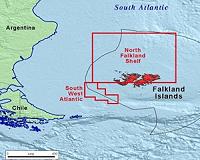 |
Washington (AFP) May 26, 2011 Scientists on Thursday cast doubt on a study that claimed bacteria ate nearly all the methane that leaked after the BP oil spill in the Gulf of Mexico, saying its methods were flawed. Describing the findings as "ambiguous" and "unconvincing," marine scientist and lead author Samantha Joye and colleagues from 12 other institutions wrote in the journal Science that the study's methods demanded a second look. "We find the complete methane oxidation hypothesis unconvincing," said the article in the peer-reviewed journal. The initial study was also published in the journal Science back in January. It argued that "nearly all" of the methane -- which made up 20 percent of the huge plume of crude oil that escaped from a broken underwater pipeline after the BP-operated Deepwater Horizon platform exploded on April 20, 2010 -- was ingested by bacteria in four months. The leak, the worst oil spill in US history, was finally plugged on July 15, 2010 after spewing millions of gallons of crude into the Gulf. University of California Santa Barbara geochemistry professor David Valentine, one of the earlier study authors, said the rapid "digestion" of the methane by bacteria showed the vital role microorganisms play in preventing greenhouse gases at the bottom of the ocean from entering the Earth's atmosphere and contributing to global warming. But Joye and her colleagues said in their technical comment piece published Thursday that that may not have been the case. "A range of data exists that shows a significant release of methane seeping out at the seafloor to the atmosphere, indicating that the microbial biofilter is not as effective," said Joye, a professor at the University of Georgia. Among the flaws cited were an uncertain amount of how much hydrocarbon actually leaked, shortcomings of the scientific model used to make the projections, and a potential misinterpretation of the data. For instance, "samples from the control stations and the low-oxygen stations that were analyzed for unique genetic markers in the January 2011 study showed no significant difference in the abundance of methane consuming bacteria," it said. The model used in the study also "neglected important factors that affect the transport and biodegradation of methane... (and) only provided a tentative match of the observational data." Co-authors included experts at University of California, Santa Barbara; Florida State University; University of North Carolina, Chapel Hill; University of Washington, Seattle; US Naval Research Laboratory; Scripps Institution of Oceanography; and Leibniz Institute for Baltic Sea Research. "Our goal is to understand what happened to the methane released," said Joye. "And in the larger framework, to better understand the factors that regulate microbial methane consumption following large-scale gas releases," she said. "I believe there is still a lot to learn about the environmental factors that regulate methane consumption in the Gulf's waters and elsewhere."
Share This Article With Planet Earth
Related Links Powering The World in the 21st Century at Energy-Daily.com
 Falklands step up oil quest through 2012
Falklands step up oil quest through 2012Stanley, Falkland Islands (UPI) May 25, 2011 British-ruled Falkland Islands will intensify drilling for oil and gas deposits in the South Atlantic waters despite Argentina's sovereignty claims and condemnation of the hydrocarbons exploration program. Tensions between the Argentine and Falklands governments exploded into violence when dock workers in La Plata, Argentina, responded to rumors that two Norwegian ships in the harbor ha ... read more |
|
| The content herein, unless otherwise known to be public domain, are Copyright 1995-2010 - SpaceDaily. AFP and UPI Wire Stories are copyright Agence France-Presse and United Press International. ESA Portal Reports are copyright European Space Agency. All NASA sourced material is public domain. Additional copyrights may apply in whole or part to other bona fide parties. Advertising does not imply endorsement,agreement or approval of any opinions, statements or information provided by SpaceDaily on any Web page published or hosted by SpaceDaily. Privacy Statement |